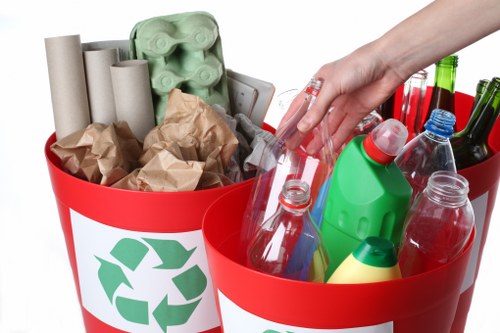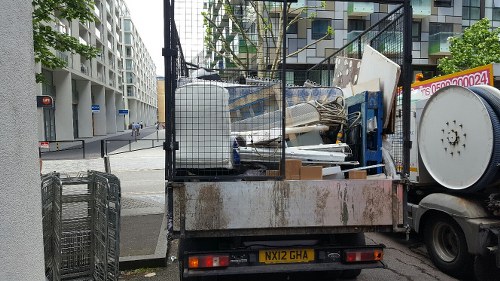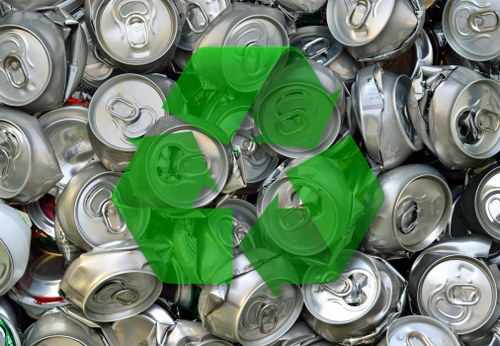Builders Waste Archway: Sustainable Solutions for Construction Debris

Introduction to Builders Waste Archway
Builders Waste Archway represents an innovative solution in managing construction debris and building waste. In today’s ever-changing construction landscape, proper waste management is not only an environmental concern but also a practical necessity. Municipalities and construction companies alike are discovering that a systematic approach to handling builders waste can save time, reduce costs, and protect our communities from potential hazards.
At its core, Builders Waste Archway is designed to improve how waste is sorted, recycled, and repurposed. With eco-friendly methodologies and state-of-the-art technology, this concept transforms the way waste is perceived. Instead of seeing debris as a burden, it redefines it as a resource for future construction projects. This method instills both environmental responsibility and economic viability within local and national industries.
In many regions, including Archway, environmental sustainability is intertwined with community development. The initiative has been warmly welcomed as it creates jobs, reduces landfill overloads, and ensures that harmful materials are not released into the environment. This article will explore the many facets of Builders Waste Archway, highlighting its benefits, techniques, and the close-knit areas that support these sustainable efforts.

Why Builders Waste Archway is Essential
There are several reasons why Builders Waste Archway is gaining attention. First, construction sites generate large quantities of waste that, if not managed properly, can lead to environmental degradation. The efficient sorting and recycling of these materials can minimize adverse impacts on both soil and water. In addition to reducing the burden on municipal landfills, effective builders waste management encourages recycling and reuse. This process means that what was once old material can be repurposed or even transformed into new, innovative construction materials.
Furthermore, communities that adopt sustainable builders waste techniques tend to experience lower greenhouse gas emissions. This is because recycling and repurposing reduce the need to produce new materials that often come with a high environmental cost. In areas like Archway, local governments have set targets for waste reductions and are turning to builders waste archway systems to meet these goals. These initiatives embody a commitment to cleaning up urban development while promoting a circular economy.
The commitment to sustainable waste practices has further encouraged innovations in technology and logistics. Modern sorting machinery can now distinguish between different types of building waste with incredible accuracy, while data-driven systems help track waste flows. These advancements not only make Builders Waste Archway an environmental asset but also underline the importance of resource efficiency and responsible disposal in construction. By integrating these practices, cities can foster healthier living conditions and boost local economies.

Effective Waste Management Practices and Techniques
Planning and Sorting
One of the crucial steps in the Builders Waste Archway process is well-thought-out planning. It begins at the source – the construction site. Project managers now see waste as part of the planning process, designing projects that incorporate recycling stations and safe storage for different materials. This organized approach ensures that hazardous substances such as asbestos, heavy metals, and other contaminants are handled separately from recyclable items. With a proper plan, waste streams can be categorized into reusable, recyclable, or disposable segments.
Recycling Innovations
Advances in recycling technology have driven the success of Builders Waste Archway. Modern facilities employ methods that clean, process, and convert construction debris into building materials. For instance, concrete can be recycled to produce aggregates for new roads and buildings, while metals and plastics are sorted and reused in later projects. The introduction of these innovations has led to a noticeable reduction in landfill waste and a surge in sustainable development practices.
Efficient waste management systems involve continuous monitoring and evaluation. In many Archway projects, experts use digital tracking systems to oversee waste disposition throughout a project’s lifecycle. This meticulous approach not only ensures that all waste is accounted for but also strengthens the accountability factor in the entire construction process. The synergy between planning, sorting, and advanced recycling makes Builders Waste Archway a model for sustainable urban development.

Environmental Impacts and Innovative Solutions
With growing concerns over urban pollution and climate change, Builders Waste Archway offers a beacon of hope. By redirecting waste from landfills, this method directly contributes to reducing greenhouse gas emissions—a key element in fighting global warming. The environmental benefits are widespread; fewer pollutants mean improved air and water quality, which in turn fosters better community health and biodiversity preservation. When communities take responsibility for their builders waste, the entire ecosystem benefits.
Innovations in material recovery are another highlight of this approach. Not only is waste transformed into new construction materials, but inventive strategies are being adopted to harness energy from waste. Some facilities even incorporate processes that convert stored waste heat into usable energy, a strategy that underscores the circular economy philosophy. This blend of environmental mindfulness and economic pragmatism has pushed Builders Waste Archway to the forefront of modern construction practices.
Moreover, various research projects have underscored the cost effectiveness of integrating these systems into urban planning. Cities that adopt builders waste archway techniques often see significant savings on waste disposal and raw-material procurement costs. Collaboration between governmental bodies, industry experts, and local communities has further bolstered the implementation of these practices, setting a promising example for sustainable urban development worldwide.

Local Relevance: Exploring the Nearby Archway Areas
Builders Waste Archway is not just a theoretical model – it has practical applications in many regions. In fact, there are 15 nearby areas where this initiative is making significant contributions. Each of these Archway communities has adopted its own unique approach to managing construction debris, ensuring that sustainability is a central theme in all development projects. Old Town Archway offers charming historic sites while incorporating modern waste sorting stations. Meanwhile, New City Archway has become a hub for innovative recycling technologies, blending urban innovation with sustainability.
Other areas such as Riverside Archway and Hilltop Archway provide picturesque landscapes where builders waste is carefully repurposed to preserve natural beauty. Coastal Archway leverages sea breezes and renewable energy sources alongside its dedication to waste management. In Industrial Archway, efficient and robust recycling programs help alleviate the heavy burdens of construction waste, paving the way for cleaner energy and sustainable industry practices.
Additionally, communities like Green Archway, Meadow Archway, Lakeside Archway, Parkside Archway, Downtown Archway, Suburban Archway, Uptown Archway, Historic Archway, and Eco Archway are pioneering waste management techniques. These areas have embraced initiatives that transform old materials into building blocks for more efficient housing and community centers. Their proximity to the central Archway region makes collaboration and knowledge-sharing much easier, ensuring consistent growth in eco-friendly construction practices and sustainable urban development. This network of communities sets an example of how localized efforts in the builders waste archway domain can lead to extraordinary environmental achievements.
Frequently Asked Questions
- What is Builders Waste Archway? Builders Waste Archway is an integrated system focused on the efficient management, recycling, and repurposing of construction debris and building waste, ensuring environmental protection and economic viability.
- How does it benefit the environment? By recycling and reusing waste materials, this initiative reduces landfill use, lowers greenhouse gas emissions, and preserves natural resources, helping to create a cleaner and healthier environment.
- What types of waste are handled? The system manages a variety of construction waste, including concrete, metals, plastics, and hazardous materials, all of which are sorted and processed using innovative recycling techniques.
- Is Builders Waste Archway cost effective? Yes, it helps reduce disposal and raw material costs while promoting energy savings through innovative recycling practices, which benefits both municipalities and construction companies.
- Which nearby areas are involved? The initiative is active in communities like Old Town Archway, New City Archway, Riverside Archway, Hilltop Archway, Coastal Archway, Industrial Archway, Green Archway, Meadow Archway, Lakeside Archway, Parkside Archway, Downtown Archway, Suburban Archway, Uptown Archway, Historic Archway, and Eco Archway.
